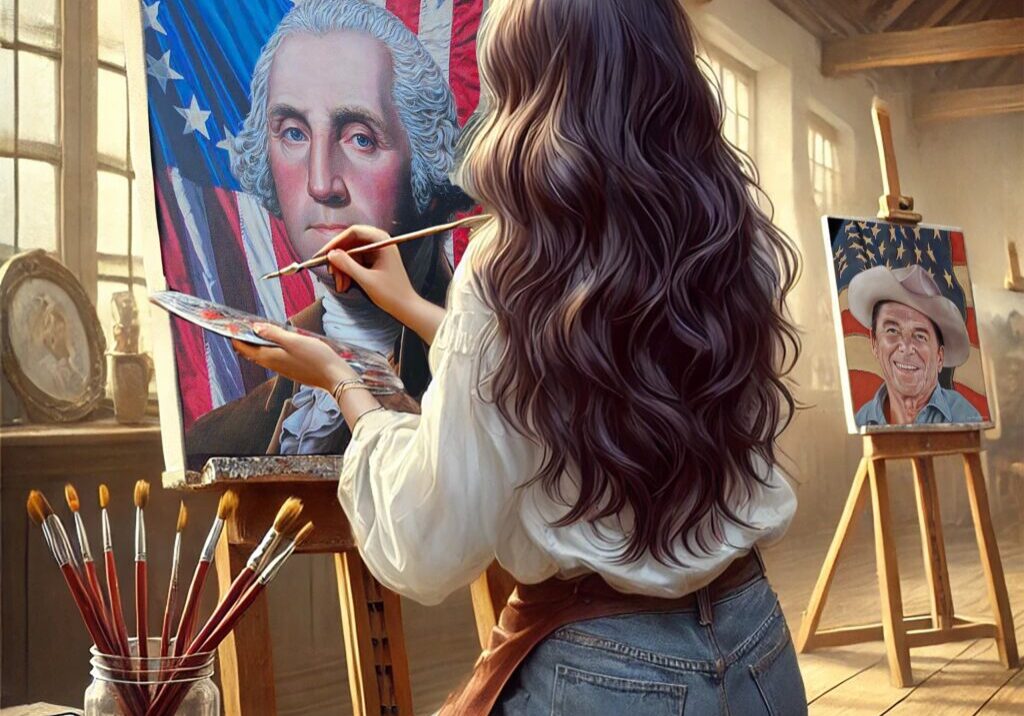
The Loyalists Gaze: Portraits on the Other Side of the Revolution
Not every face turned toward liberty. As the colonies erupted in calls for independence, many remained loyal to the British Crown. Some did so out of conviction. Others out of fear, tradition, or a belief in order. These Loyalists were merchants, clergy, governors, farmers, and ordinary citizens. Their portraits still survive. They speak with a different rhythm, more reserved, often tinged with sorrow.
As I painted the mural, I thought often about these quiet faces. The Loyalist’s gaze is a reminder that history has more than one angle. Loyalist portraiture was not as public or celebratory as the images of revolutionaries. These portraits were private commissions. They reflected personal status rather than political triumph. Yet in their silence, there is power. The artists who painted them, including Benjamin West and John Singleton Copley after his move to England, captured figures standing on the wrong side of history but still full of humanity. These were not caricatures. They were people caught in a time of fracture.
Benjamin West’s Loyalist portraits often feature a gentle light and strong vertical posture. His subjects do not declare anything. Instead, they appear resolved. West himself moved to London and remained there for most of his career. He became President of the Royal Academy. His loyalty was cultural and artistic, not just political. Yet in his work, the Loyalist face is neither villain nor victim. It is simply human. Copley, who had once painted the colonial elite in Boston, found a new clientele among the English aristocracy and exiled Loyalists.
His later portraits are colder, more formal, and more emotionally distant. They echo the loss of homeland and position. The fabric is still elegant, the technique still masterful, but something has shifted. The expressions are more guarded. The backgrounds darker. There is a quiet mourning in these portraits, even when wealth remains intact. As I considered how to honor this perspective in the mural, I looked for subtle ways to include the unseen. There are figures in the crowd who do not cheer.
Some stand slightly apart. Their clothing is fine but subdued. Their eyes look away rather than forward. They are not hostile. They are uncertain. That uncertainty is as much a part of the Revolutionary experience as the protests and proclamations. It deserved a place on the wall. One challenge of painting historical figures is avoiding the temptation to assign sides too quickly. The Revolution was a personal conflict as well as a national one. Families divided. Friends fell silent. Painters like West and Copley bore witness to this in their portraiture. They painted not with slogans, but with quiet layers. Light on a sleeve. A tightened mouth. The way a hand rests on a book instead of a musket.
From a technical standpoint, Loyalist portraits often emphasize stillness and refinement. The brushwork is controlled. The clothing detailed but not ostentatious. There is a formality that sets them apart from the revolutionary portraits, which tend to celebrate action and individuality. This formality becomes a kind of armor. It says, this is who I am, even if the world around me changes. In my own painting, I try to bring this sensitivity into every composition. Not every figure moves with the crowd. Not every gesture leans toward the flag. Some simply stand. Some turn inward. That stillness carries weight. It reminds us that the American story includes doubt as well as certainty.
The Loyalist’s gaze may not inspire celebration, but it offers a different kind of truth. It invites us to remember that every revolution has those who stay behind. Portraits preserve them with dignity, not because they won, but because they mattered. Their presence deepens the texture of our history. And that is something art can give us. Not just the bright moments of unity, but the shadows that shape the whole.

